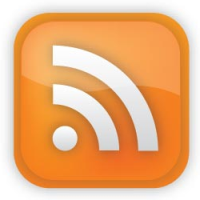Publishing RSS Feeds
neatComponents allows you to publish an RSS feed based on the contents of a Query.
In depth
Discover more about RSS capability here...
What is RSS

When you publish an RSS feed, you are providing a file at at specified URL on your site, which contains information about one or more items. Historically these were originally used to provide links to news stories, but is now most commonly used to provide feeds of blog postings. There is no restriction on what you can use it for, within the limits of the fields defined by the specification.
To view the output from an RSS feed, a user subscribes to the RSS feed using a Feed Reader. Google Reader is an example of this
Creating your RSS Feed
Overview
As RSS feed is a set of records. To publish one we first create a Query containing all the fields we need, just as if we were to display the records on a web page.
Then, rather than displaying the records on a web page, we embed a link on the web page, which links to the RSS file itself.
To achieve this, once the Query is made, we add an RSS View component, and configure it: linking it to the Query, and selecting the fields to use. It is this RSS View of the Query that is embedded on the web page.
The RSS View embedded on the page is actually just a link to the RSS file.
Detail
In the RSS View we configure two things:
- The Link which gets embedded on a page of the site
- The RSS file that the link points to
The Link can be an image or text, in fact it can be anything you like, as the system provides an editable text area that you can include anything you like in. The only requirement is that something there is made into a link, using the Link Wizard, and links to the RSS File. (In this context, the Link Wizard has an option ‘RSS File’ for this purpose)
An RSS file consists of two parts: the Channel, and the Items
The Channel contains information regarding the feed as a whole. The Items map each record from the Query into the RSS feed.
When configuring the RSS View, you can either type in the value for the Channel fields directly, or you can select fields from the Query. If you select fields, it will use the values presented with the first record returned by the Query.
Only the Title and Description fields are required – for both the Channel and the Items. All other fields are optional.
Embedding the RSS View on a page
The RSS View is embedded on a page in the same way as any other view: using the embed tool firsts elect the Query it is based on, then select the RSS View. You can set criteria and parameter relevance to narrow the set of records contained in the RSS file. Note that unlike many other views, regardless of how many records are returned, only one RSS Link will be shown on the page: the multiple records are contained within the RSS file itself.
Behind the scenes
Embedding an RSS View on a page does not create the RSS file at that time. Instead, it defines the rules by which an RSS file can later be made. There is typically a delay between creation and update so changes may not appear to be 'live' - but they are.
The RSS file is made on-demand when the RSS link is clicked on, or called from an RSS Reader. Once created, the RSS file is kept for a period, defined by the TTL setting in the RSS file itself. When this period expires, a housekeeping task removes the file, and a fresh version is recreated when the next request for it is received.
A single RSS View embedded on a page can cause an infinite number of RSS files to be created, as the contents can be affected by the parameters used to call the page.
For example, in a social networking site, each member might have a homepage, with an RSS feed of their postings. The Homepage would be a single page, personalised to the individual by the page parameters. The RSS View would also see the parameters, and use that to determine which postings to include.






